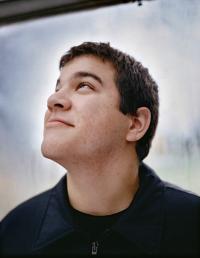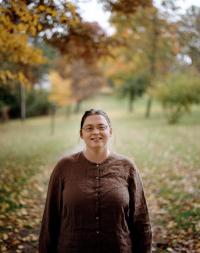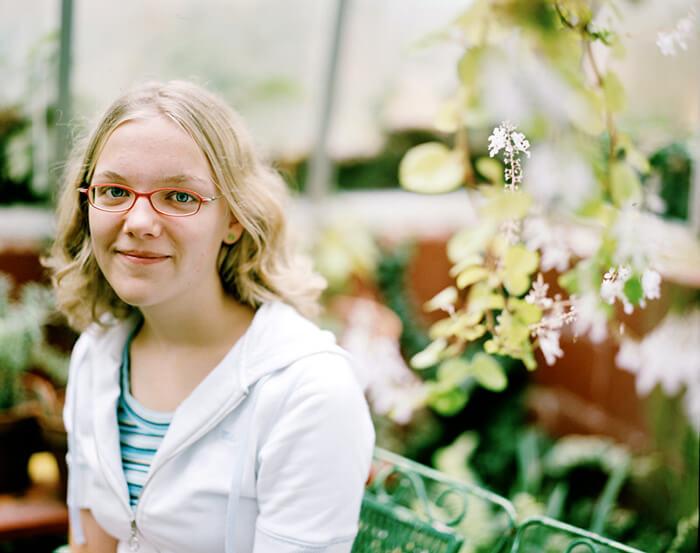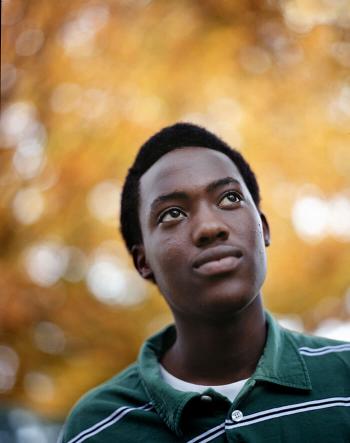As Rich Sidwell talks about Olney Friends School, students in a nearby room are practicing drums, piano, even bagpipes. The sounds surround Sidwell's words, creating a certain harmony.
"While there are plenty of schools that promote being smart as the pinnacle, Olney Friends School believes in a deep commitment to goodness as well as intelligence," says Sidwell, the head of school at Olney. "The curriculum is built around the premise of 'God in everyone.'"

The idea of "God in everyone" is a root belief for the Society of Friends, also known as Quakers. It informs all that is done at the school in Barnesville, Ohio.
At Olney and beyond — in religious and nonreligious private schools, as well as public schools across the country — this philosophy is known as holistic education. Holistic education asserts that everything is connected; everything is in relationship.
Holistic educators, in the words of Parker J. Palmer, "must commit to being authentic adults ... whose lives are built around caring for new lives." Palmer has come to be a leading voice about spirituality and education.
One need not venture very far into the school to find this commitment to goodness, intelligence and relationship at Olney.
Meet Musa, a 17-year-old senior from the West Bank who has been at Olney for three years. His parents are in Palestine, and Musa hasn't been able to visit them; Olney has become his family. Musa grew up taking religion classes in Islamic fundamentalism; not surprisingly, Olney has been a life-changing experience for him. "I've taken the women's studies class, and now I even know the difference between 'gender' and 'sex,'" he says proudly.
Musa has a quick answer for what he most prizes at Olney: "Open-mindedness."
The 'who' of teaching
Educators often are asked, "What subject do you teach?" Or, "What grade level do you teach?" Rarely if ever, though, are teachers asked about self-awareness, how one's "self" shapes and influences how one teaches.

In his book, The Courage to Teach: Exploring the Inner Landscape of a Teacher's Life, Palmer does ask such questions: "Who is the self that teaches? How does the quality of my selfhood form — or deform — the way I relate to my students, my subject, my colleagues, my world?"
Holistic education is demanding because it emphasizes well-being. That means teachers must be strongly committed to self-actualization if they are to teach in ways that empower students.
"At any time," Sidwell explains, "a classroom or faculty meeting may turn into a 'tuning session' where we pause and look for unity."
Such introspection helps define curricula for teachers and students alike at Olney.
Melissa Poole, teacher and dean of students at Olney, said concepts of self and identity are at the heart of the 9th-grade humanities curriculum: What is identity? How is our identity shaped? Who or what impacts it? What is our individual personal responsibility in our own identity's formation and growth?
Such questions become vital considering 20 percent of the students at Olney Friends School are from different countries. Students speak different languages, are of different races and ethnicities, come from different socioeconomic classes, are shaped by different faiths and have different learning abilities.
Because the classes are small and the relationships between students and teachers are intimate, answers to identity questions are more complex than they might otherwise be. "You can't just be a jock," said Peggy Conant, assistant head of school.
Students are multifaceted, a combination of strengths and weaknesses. Olney students put on several musical plays throughout the year, for example, and students participate regardless of musical abilities. Conant described one student who had a prominent solo and sang "terribly and happily" as a full participant. When finished, there was a burst of applause and acclaim because the student had successfully tried something difficult. At Olney, it's OK to be off-key.

Public schools, holistic teachers
Private schools are not the sole province of holistic education. Plenty of public school educators consider themselves holistic educators, too. Consider William DeJean.
Tibetan flags hang everywhere in DeJean's English classroom at Rancho Bernardo High School in San Diego, Calif. DeJean isn't Buddhist, but he likes what the flags represent.
"For centuries these flags have been planted outside to carry the prayers on the wind," he says. "Buddhism is non-theistic, and the symbols on the flags represent aspects of the enlightened mind like compassion, perfect action and fearlessness. These are exactly the kinds of things I want to model to my students."
Teaching holistically in any classroom isn't necessarily easy.
"The challenge of being a holistic educator is that I must continually put myself at the center of my own life before I teach students to do the same with their lives," DeJean says. "If I am not living a healthy, abundant and balanced life then I cannot help my students to do the same with their own lives. I cannot give from an empty cup."
Being a holistic educator in a public school changes the way DeJean measures success. It is not simply what students know or learn, he says, but what they become.
"Watching students face their fears, overcome obstacles or transform their lives invites me to do the same with my own life," he says.
Kimberly Skach, a reading specialist at Ventura Park Elementary School in Portland, Ore., also embraces holistic education in her work but sometimes finds herself bumping up against rigid, test-driven requirements. She sometimes feels "taken hostage" by such things as the No Child Left Behind Act.
Skach quotes holistic education expert Palmer — "We teach who we are" — then adds with a sigh, "No Child left Behind means, 'We teach what we test.'"
Where, then, does a teacher find time for community building, for personal growth or thinking strategies?
"The severity of the penalties to teachers and districts for failure to raise test scores means we must teach the way students are tested," Skach says. "It has taken us back to facts and figures learned in rote fashion so that students can score high on tests. We will have children great at playing Jeopardy! but bad at creating a sustainable and compassionate world."

Choice — and responsibility
Nowhere is Palmer's "caring for new life" more evident than in elementary school.
At 7 p.m. one weekday, young parents are sitting on small blue kindergarten chairs at Montgomery Montessori School in Montgomery, Ala. Lesley Stewart, the primary teacher, is orienting them to the school, comforting students and parents alike.
"My girl is wild," a mother says, chuckling but clearly concerned that her daughter might be too much to handle. The teachers lead a discussion about how many schools use coercion as a form of "managing" students.

At the Montessori school, another place where holistic education is a mainstay, choice and personal responsibility are emphasized. "Even at the preschool age, children are capable of responsible choices if they are given meaningful curriculum," says Fran Foster, a veteran elementary school teacher.
The structured, meaningful activities that children participate in reveal a major theme in Montessori schools: They don't educate for life in a democratic society; they educate in a democratic society.
A 'sacred' vocation
In her book Teaching to Transgress: Education as the Practice of Freedom, bell hooks writes about an engaged, holistic way of educating:
"To educate as the practice of freedom is a way of teaching that anyone can learn. That learning process comes easiest to those of us who teach who also believe that there is an aspect of our vocation that is sacred; who believe that our work is not merely to share information but to share in the intellectual and spiritual growth of our students."
That's the hope of DeJean and Skach, and it's at the heart of the Montessori school's orientation. It's also the story at Olney Friends School; just ask another Olney student, Sam.
Sam, 15, is an openly gay student from Columbus, Ohio, who plans to spend an academic year abroad in Costa Rica. He says he cherishes Olney's supportive and nurturing environment.
When asked what lessons he hopes to take with him when he leaves Olney, Sam describes a teacher who took time every day at lunch to have a glass of orange juice with him, a special time beyond any classroom project or lesson, one of Sidwell's "tuning session" moments.
"Relationships are what I'll take with me," Sam says. "An appreciation of community."
